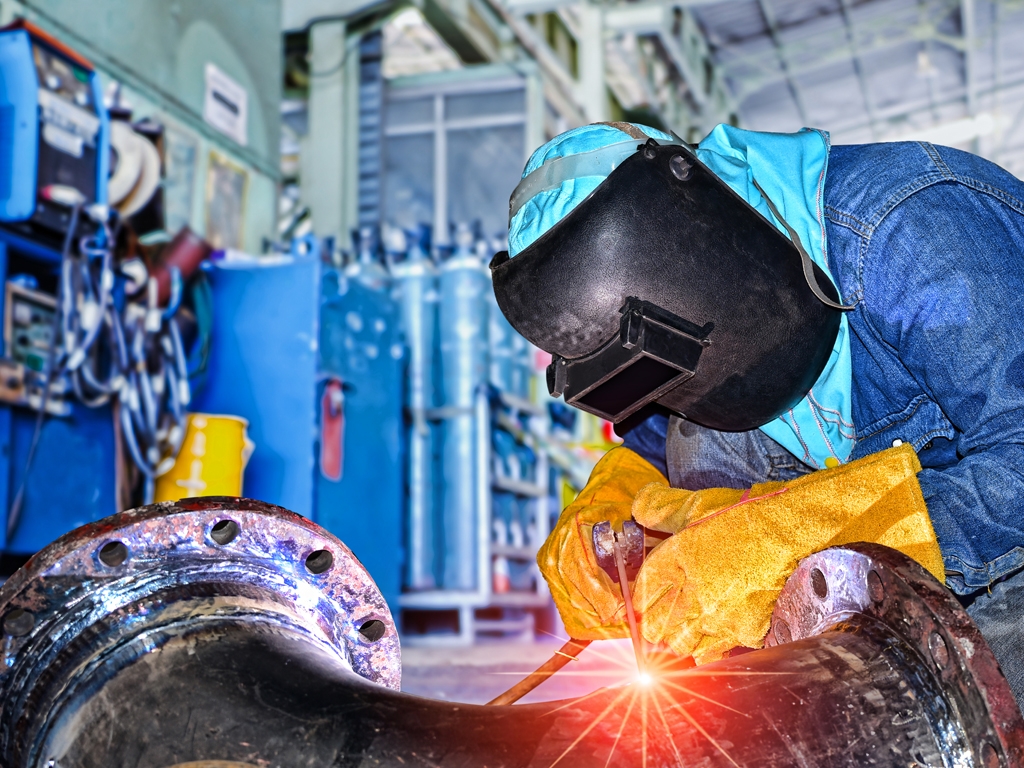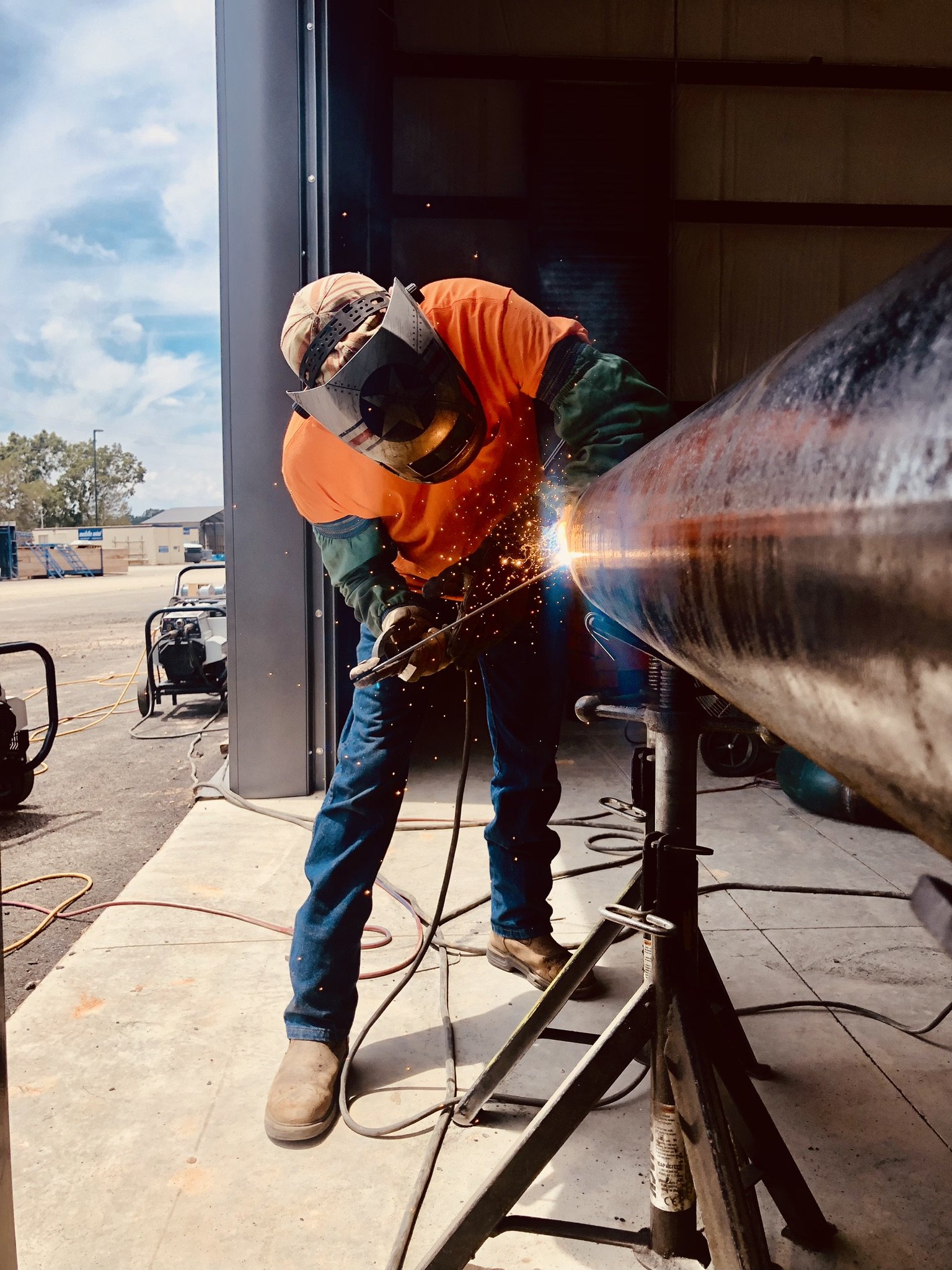Typical Welding Repair Service Issues and Just How to Address Them Efficiently
Welding repair services frequently run into a series of concerns that can endanger the stability of the last product. Common problems consist of insufficient infiltration, porosity, and misalignment, amongst others. Each flaw offers distinct obstacles that require details methods for resolution. Recognizing these problems is essential for welders intending to boost their results and abilities. This discussion will explore these usual welding repair work problems and effective methods to address them.
Poor Infiltration
Insufficient penetration happens when the weld steel stops working to fully fuse with the base material, leading to weak joints and prospective structural failures. This concern usually comes from not enough warm input, wrong electrode angle, or incorrect welding speed. Welders may run into insufficient penetration as a result of a mistake of the needed criteria for a specific material thickness or type. Additionally, contamination on the base product's surface area can prevent reliable bonding, intensifying the issue. To attend to poor infiltration, welders need to ensure appropriate setups on their equipment and keep a tidy work surface area. Regular inspection of welds is suggested to identify any shortages early, permitting timely modifications and the avoidance of compromised architectural stability in bonded settings up.
Porosity
Porosity is a typical problem in bonded joints that materializes as small gas bubbles entraped within the weld metal. This issue can jeopardize the honesty of the weld, leading to decreased toughness and potential failing under anxiety. Fabrication. Porosity generally arises from contamination, wetness, or incorrect welding strategies, which permit gases to escape into the molten weld pool. To address porosity, welders need to ensure correct surface prep work, maintain a tidy functioning atmosphere, and make use of appropriate welding criteria. Additionally, selecting the right filler material and securing gas can minimize gas entrapment. Regular inspection and testing of welds can aid identify porosity early, assuring timely restorative activities are taken, therefore preserving the high quality and reliability of the welded framework
Imbalance
Imbalance in welding can emerge from various factors, consisting of inappropriate setup and thermal development. Understanding the source is important for efficient resolution. Numerous improvement techniques are available to realign components and assure structural stability.
Reasons of Imbalance
Welding imbalance commonly stems from a variety of underlying concerns that can compromise structural stability. One primary cause is incorrect fit-up of components prior to welding, which can lead to spaces and unequal surfaces. Variations in thermal expansion during the welding procedure can additionally result in distortion, particularly if the materials being signed up with have various coefficients of expansion. Furthermore, poor securing and fixturing may fall short to hold elements securely in area, resulting in movement throughout welding. Improperly conserved tools, including welding devices and devices, might present incongruities in the weld grain, further adding to misalignment. Operator error, stemming from insufficient training or experience, can likewise play a considerable function in creating misaligned welds.

Improvement Techniques Readily Available
Resolving misalignment efficiently requires a mix of rehabilitative methods customized to the details issues available. One usual technique is the use of components or jigs to hold elements in the proper placement during welding, making certain regular placement. Additionally, preheating the materials can aid decrease distortion and improve fit-up. For considerable imbalance, mechanical realignment strategies, such as using hydraulic jacks or clamps, can be employed to correct the placement prior to welding. Post-weld warmth treatment might additionally be needed to ease stress and anxieties brought on by imbalance. Ultimately, careful assessment and modification during the arrangement stage can protect against imbalance problems from becoming substantial problems, promoting a smoother welding process and improving total structural stability.
Distortion
Distortion is an usual obstacle in welding that can emerge from various variables, including unequal heating & cooling. Understanding the root causes of distortion is necessary for carrying out reliable prevention techniques. Addressing this issue not just boosts structural honesty however additionally enhances the overall high quality of the weld.
Reasons for Distortion
When subjected to the intense warm of welding, materials often go through modifications that can cause distortion. This phenomenon mostly occurs from thermal expansion and tightening throughout the welding process. As the weld location heats up, the product broadens; upon cooling, it contracts, which can produce interior tensions. On top of that, uneven heating throughout a work surface can worsen these stresses, causing bending or bending. The kind of material additionally plays a significant function; metals with varying thermal conductivity and coefficients of expansion might respond in different ways, leading to unpredictable distortions. Furthermore, bad joint layout and poor fixturing can add to misalignment during welding, increasing the chance of distortion. Understanding these reasons is crucial Montana Mobile Welding and Repair Fabrication for effective welding repair and avoidance techniques.
Avoidance Techniques
Reliable prevention techniques for distortion during welding emphasis on regulating heat input and guaranteeing correct joint layout. Preserving a consistent heat input aids to reduce thermal development and contraction, which can cause distortion. Making use of strategies such as pre-heating the workpiece can additionally minimize the temperature gradient, advertising consistent heating. Additionally, choosing appropriate joint layouts, such as T-joints or lap joints, can boost security and reduce stress and anxiety concentrations. Executing appropriate fixturing to protect the work surfaces in place further aids in maintaining alignment throughout the welding procedure. Staggered welding series can distribute heat a lot more uniformly, preventing local distortion. By using these methods, welders can significantly reduce the possibility of distortion and boost the total high quality of their welds.
Fracturing
Breaking is a common problem experienced in welding repair services, frequently resulting from various aspects such as improper air conditioning prices, product choice, or insufficient joint preparation. The incident of cracks can greatly endanger the honesty of the weld, leading to prospective failures during operation. To resolve this problem, welders should first evaluate the origin, guaranteeing that products work and appropriately selected for the specific application. In addition, controlling the cooling rate throughout the welding procedure is necessary; rapid cooling can cause tension and result in splitting. Proper joint layout and preparation also contribute to minimizing the threat. Implementing these approaches can enhance weld high quality and durability, ultimately lowering the chance of splitting in completed weldments.

Incomplete Combination
A significant concern in welding fixings is insufficient fusion, which takes place when the weld steel does not appropriately bond with the base product or previous weld passes - Fabrication. This flaw can lead to weak points in the joint, possibly compromising the stability of the bonded structure. Factors adding to insufficient combination consist of insufficient heat input, improper welding method, and contamination of the surfaces being joined. To resolve this issue efficiently, welders need to guarantee correct pre-weld cleansing and surface preparation, in addition to readjust their welding specifications to accomplish ample penetration and fusion. Regular evaluation throughout the welding process can likewise aid identify insufficient blend early, enabling prompt corrective measures to enhance the general top quality of the weld
Overheating
While welding repairs can improve architectural honesty, overheating presents a significant challenge that can result in product degradation. Too much heat during welding can change the mechanical homes of steels, leading to minimized strength, raised brittleness, and warping. This phenomenon is specifically important in high-stress applications where architectural reliability is paramount. Determining getting too hot can include aesthetic inspections for staining or distortion, as well as monitoring temperature throughout the welding procedure. To alleviate the threats linked with overheating, welders need to use suitable strategies, such as managing warmth input, changing travel rate, and utilizing appropriate filler materials. In addition, applying pre- and post-weld heat treatments can assist recover product residential or commercial properties and improve the general high quality of the fixing, making certain long-term performance and safety.
Regularly Asked Concerns
What Are the Usual Signs of a Welding Flaw?

Exactly How Can I Evaluate My Welds for Quality?
To test welds for top quality, one can use visual inspections, ultrasonic testing, and radiographic techniques. Each method assures structural honesty, recognizes problems, and verifies adherence to specified requirements, ultimately improving the integrity of the bonded joints.
What Safety and security Preventative Measures Should I Take While Welding?
When welding, one should focus on safety by using ideal personal safety tools, making sure correct ventilation, securing flammable materials away, keeping a tidy office, and knowing surroundings to protect against mishaps and injuries.
Can I Fix a Weld Without Remodeling the Entire Joint?
Fixing a weld without redesigning the whole joint is possible, relying on the damage (Belgrade Welding). Methods such as grinding, adding filler material, or utilizing a welding procedure can properly deal with details defects while preserving the surrounding framework
What Equipment Are Vital for Effective Welding Services?
Essential devices for reliable welding repair work consist of a welding maker, wire brush, mill, protective gear, clamps, and filler materials. Each device plays an essential duty in making sure high quality and safety and security throughout the repair work procedure. Porosity typically develops from contamination, moisture, or incorrect welding methods, which permit gases to get away right into the liquified weld pool. Inadequately maintained devices, consisting of welding devices and devices, may introduce variances in the weld grain, additional contributing to misalignment. When subjected to the extreme heat of welding, products commonly go through modifications that can lead to distortion. Cracking is a typical issue run into in welding repair work, frequently resulting from numerous elements such as incorrect cooling prices, product selection, or insufficient joint preparation. A substantial problem in welding fixings is insufficient combination, which happens when the weld steel does not appropriately bond with the base material or previous weld passes.